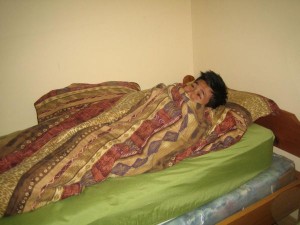Even though many individuals occasionally encounter insects that sting, some are actually allergic and have insect sting allergy. When a stinging insect delivers a bite, the site develops swelling, redness and itchiness. Among highly sensitive individuals, they are allergic to insect stings. It simply means that the immune system overly reacts to the venom.
If an individual has insect sting allergy, the body produces IgE antibodies after the initial sting. If he/she is stung again by the same insect, the venom interacts with the antibodies, thus triggering the release of chemicals that starts an allergic reaction.
What are the symptoms of a severe reaction?
In some individuals who are allergic to venom, the insect stings can be life-threatening which is a severe reaction called anaphylaxis. The symptoms can include 2 or more of the following:

- Hives and itching
- Tongue or throat swelling
- Difficulty breathing
- Abdominal cramping
- Dizziness
- Diarrhea
- Nausea
In severe cases, there is an abrupt drop in the blood pressure which leads to shock and loss of consciousness. Always bear in mind that anaphylaxis is a medical emergency that requires immediate emergency care.
How to identify stinging insects
The best way to avoid being stung by stinging insects is to identify them.
- Honeybees and bumble bees are non-aggressive and will only sting if provoked. The domesticated honeybees live in man-made hives while the wild ones live in colonies in cavities of buildings or hollow trees.
- Yellow jackets build nests that are made of a paper-mache material and typically found underground but are also found in cracks in masonry, woodpiles and walls of frame buildings.
- Paper wasps build nests made out of a paper-like material that is formed into a circular comb of cells that opens downward. The nests are often found behind shutters, under eaves, wood piles or shrubs.
- Fire ants build nests of dirt that can reach up to 18 inches tall or completely flat on the ground.
- Hornets build nests that are football-shaped with paper-like material that can be grey or brown in color. These nests are found in branches of trees, gables, shrubbery or in tree hollows.
How to prevent insect stings
- The initial measure is to stay away. Remember that these insects are likely to sting if their nests are disturbed. With this in mind, any nests close to your house should be destroyed.
- In case a flying insect is close by, you have to stay calm and slowly move away. Do not wear radiantly colored clothing and perfume while outdoors.
- Since food easily attracts insects, you have to be cautious when eating, cooking or drinking beverages such as juice or soda.
- Keep any food while outdoors in sealed containers especially during picnics until eaten.
- It is recommended to use closed-toe shoes while outdoors.
- Avoid using loose-fitting clothes since they can easily shut in insects between the skin and the material.
Treatment of insect sting allergy
If the individual is highly sensitive, he/she should bring along an auto-injectable epinephrine. This should be administered during the initial symptoms of a reaction and bring the individual to the nearest hospital for further care.
